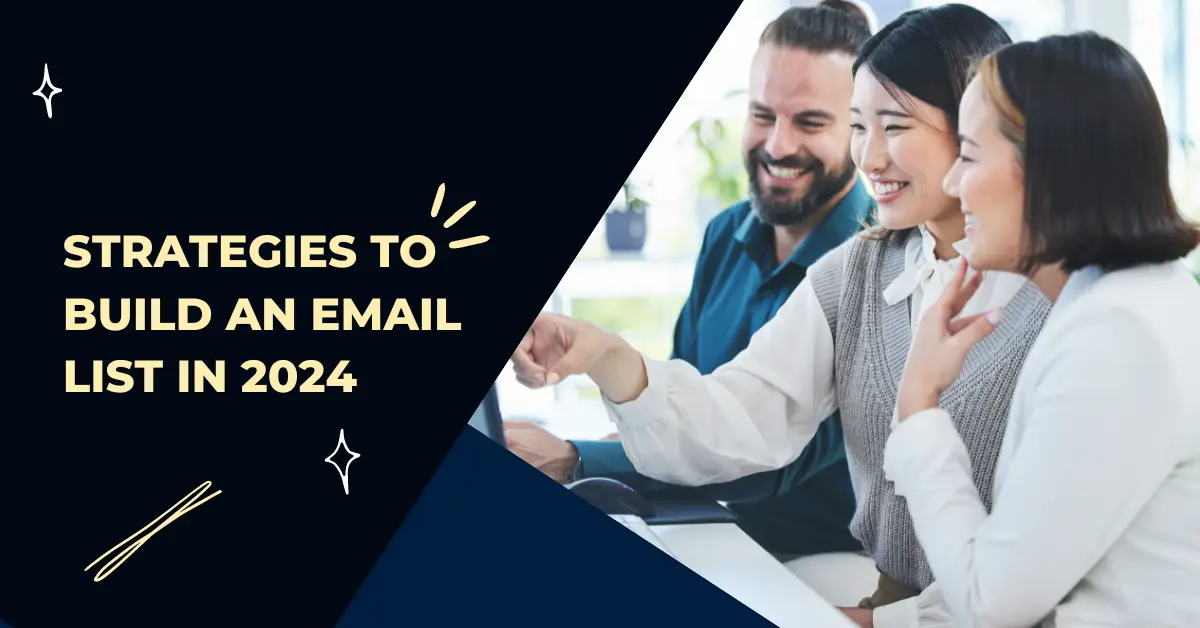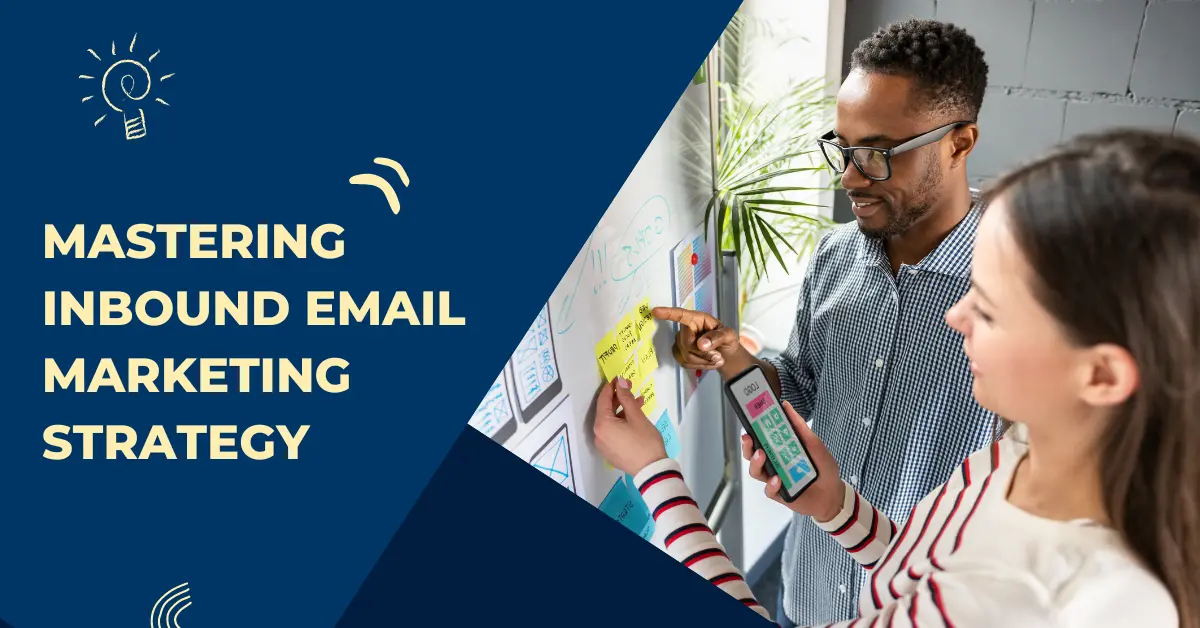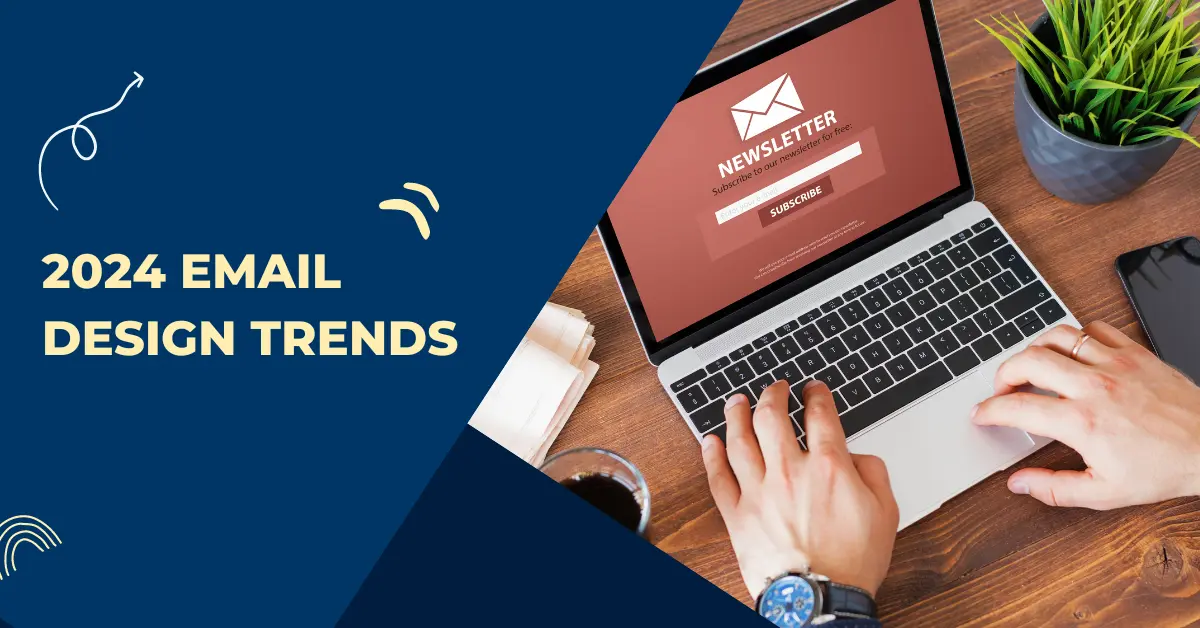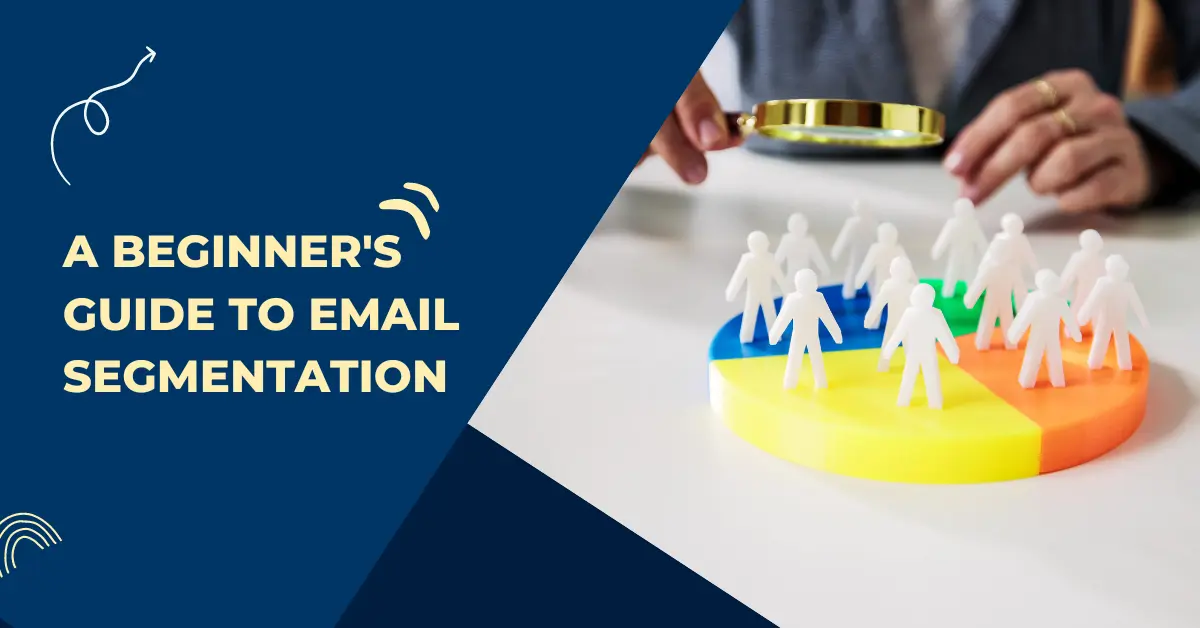Who says Email marketing is dead? Maybe we should let data do the talking.
- There’s a 3500% return for every $1 invested in email marketing. That means you’ll get a $36 ROI for each dollar you spend on email campaigns.
- Over 64% of B2C small businesses use email marketing to connect with potential and existing customers.
- 87% of businesses say email marketing is crucial for their brand success and growth in ROI.
- 81% of B2B brands use email marketing as their primary content marketing strategy, preceding blog posts and case studies.
The list goes on and on. However, one thing is certain from these stats: email marketing remains an underexplored goldmine. And your business can still take a large share of the pie.
However, the extent to which you can leverage email marketing for business success depends on your email list. A poorly built email list or scanty subscriber base means less ROI in the long run.
No lead, no sales, right?
To help you skip the line, we’ve compiled some of the strategies we used to build effective email lists for our past clients.
What Is An Email List?
An email list is a collection of email addresses of people who have agreed to receive email content from you – whether for educational purposes or promotional reasons.
For clarity, each address represents an individual who wants to hear from you, gain some value through your content, and possibly make a purchase in the future.
So, there are elements of expectation and consent. And if one of these is missing, then it’s no longer an email list. You only have a library of contact details of individuals who can’t wait to kick your emails into the spam box and blacklist your sender ID.

Get Outta The Box
Psst… Snap back to reality. No one’s going to kick your emails out of their inbox if you do it right.
Why Are Email Lists Important For Businesses?
Firstly, an email list helps you consolidate and manage your resources. That’s because all your email addresses are together, and you can even segment them into categories based on preference.
This, in turn, makes it possible to:
- Use the same email sequence to engage an email list of hundreds of people with similar interests. No need to create dozens of different sequences
- One-click your email content to thousands of recipients at the same time. That’s time-saving and more efficient.
But beyond resource conservation and proper allocation, email lists offer other benefits, such as:
- Increased Brand Loyalty and Engagement: You know who your audiences are and you have them in one place. This facilitates efficient long-term nurturing. And the more you nurture, the more your subscribers want to hear from you or interact with your content – especially if what you provide screams value.
- Direct and Personalized Communication: Each segmented email list typically contains a group of people with similar interests. So, if you know the people in email list A have issues with sending emails that convert, you can easily tailor your content to address this pain point. That’s personalization.
- Higher Conversion Rates: Remember what we said at the start? No lead, no sales. With an email list, you already have dozens of leads in your funnel. What’s left is to nurture them with great content and make them convert.
8 Simple Ways to Build an Email List That Works In 2024
Building an email list that works is no rocket science. Let’s quickly see some of the steps we use in creating one for our clients.
1. Create Lead Magnets on Your Website
A Lead magnet is an advanced marketing strategy in which you offer website visitors a valuable resource or access in exchange for their contact information – including email addresses, names, and rarely phone numbers.
This approach works all the time, with over 785% increase in conversion rates, because:
- You’re not asking for your lead’s address upfront. They are the ones who need something from you, and to get it, they have to turn in their details.
- If the resource shared is relevant, it’ll position you as a niche expert or authority.
Take Hubspot’s lead magnet as an example.
The CRM company decided to compile current trends and predictable changes that can position its audience ahead for success in 2024. This automatically elevates Hubspot as a go-to expert for business owners, sales teams, and marketing departments.
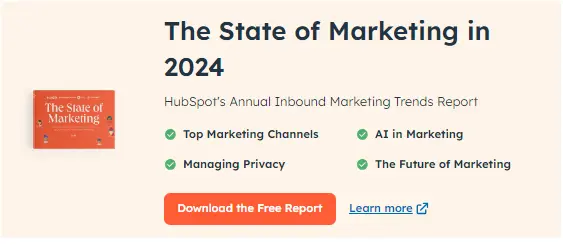
Source: Hubspot
To create an effective lead, make use of these tips:
- Create a buyer persona and know who your audiences are. You definitely don’t want to spend hours creating a resource no one needs.
- Choose the best format of resource to use based on audience segmentation and pain points. Just so you know, long-form guides generate about 67.2% conversions according to 77% of businesses in a survey, while short-form ebooks have a 100% conversion according to 55% of brands.
- Your lead magnet can be information resources, free service, or a compilation of templates or tools. What matters is relevancy.
- Craft a simple collection funnel. A simple page showing the resource you want to offer and another page collecting data is more than enough.
- Add a consent section before the call-to-action (CTA) button. This is to let your leads know you will be sending other helpful materials beside the lead magnet resource.
- Add your lead magnets where people can easily see them – on your homepage, as pop-ups on your blog posts and pages, etc.
Note that your lead magnet must be valuable and cater to at least 70% of your website visitors to be effective.
2. Add Opt-in Forms Inside Content
Insert a simple opt-in form halfway through your blog or even before it and simply ask readers to join your email list for similarly valuable information.
Adding one at the end of your blog post or pages is also a good alternative. But the effectiveness of this approach is fully dependent on the quality of your content. No will bother filling the form if your post has been valueless all through.
Likewise, make good use of smart pop-ups. Smart means they follow certain intent – like exit intent, time spent on a page, and scroll intent – before coming up on your readers’ screens.
By the way, your lead magnets can also be in the form of a pop-up. See what Neil Patel did below.
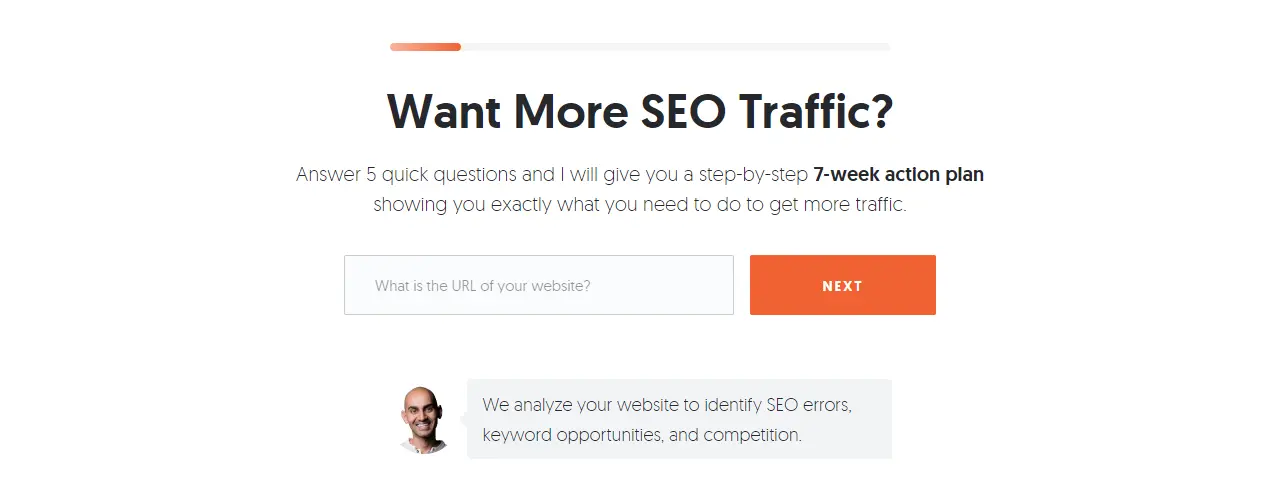
Source: Neil Patel
Anytime visitors read a blog halfway, they get a pop-up offering free website traffic analysis. Then, readers have to turn in their email to get the report. It’s that simple.
To maximize your in-content forms and pop-ups, do the following:
- Prioritize aesthetics as much as other technical functionalities. Your form should look attractive enough to win a click.
- Avoid intrusive forms and pop-ups. They are annoying.
- Track unique and repeat visits. That will help avoid showing the same pop-up to the same visitor multiple times in a day.
- As always, make your forms simple. Name, email, and consent are great. The rest are non-essential.
Lastly, one pop-up per page is enough.
3. Ask Customers To Join List After A Purchase
For brands in the eCommerce niche, this is an ice-breaker. With the rise of guest checkout, it’s getting more difficult to collect your customers’ details.
Guest checkout means buyers don’t need to create an account on a platform before making a purchase, unlike before.
You can easily circumvent that by adding a form or pop-up form to your post-purchase or “Thank You” page and asking customers to join your list for future updates on relevant products.
While this might not be as effective as a lead magnet, it can still help you generate dozens of emails if done well.
As always, ensure your form is aesthetically attractive and provides a good user experience. Also, let them know the type of marketing or product updates they will receive.
4. Leverage Gated Content
Gated content is a resource accessible only to subscribers, either paid or free.
In the case of TechTarget, creating a free reader’s profile is the benchmark used. To access some high-value content on this website, readers have to insert their details including email address (corporate), name, call number, business details, and a few other irrelevant things that we don’t need here.
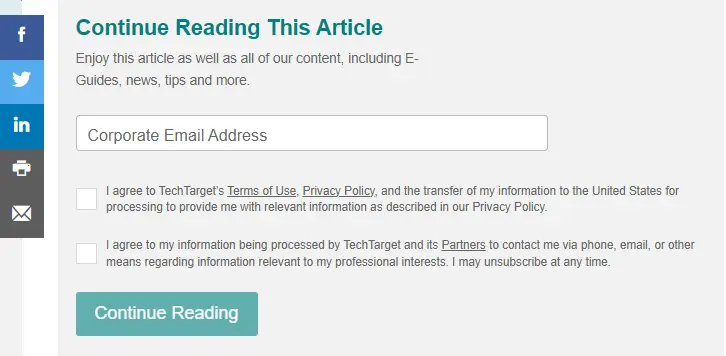
Source: TechTarget
Unlike TechTarget, you only need the reader’s email, name, and consent. You definitely don’t want them to fill out a bulky form just to gain access. Trust us, they’ll ditch you and look for other resources.
The type of gating you use also depends on the services you provide. However, subscription-gated content might not be ideal since you’re planning to build an email list. That doesn’t mean you can’t use it in the future when your email list is already filled to the brim, just like WSJ.
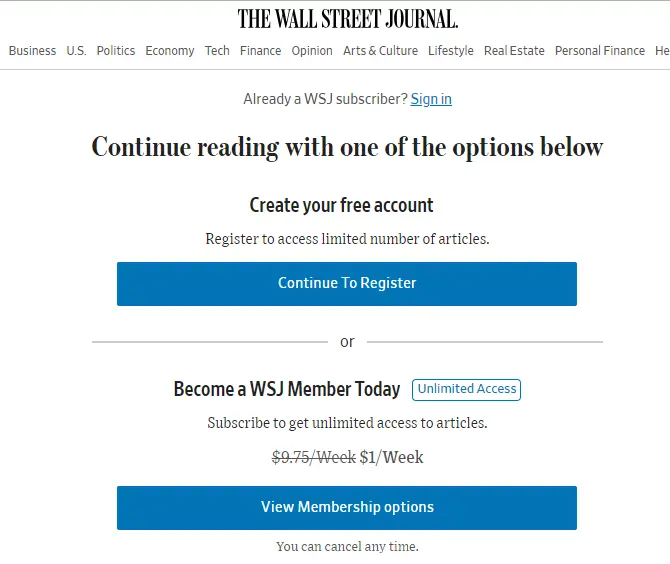
Source: WSJ
5. Engage Paid Ads Plus A Dedicated Landing Page
Generating email addresses for your list is mostly through organic means like lead magnets, opt-in forms, and gated content.
However, you can also use inorganic methods, such as PPC advertisements or campaigns, and encourage your target audience to drop their details.
And that’s where landing pages come in.
Once people click on your ads, they will be taken to this page and asked to fill out a form and green-check the consent box to receive email content from you.
So, you definitely want the landing page’s design to be sleek, simple, and usable.
Also, it’s quite tricky to ask people to join your mailing list through ads, unless you add some incentives or rewards. Sort that by providing a resource they can claim after registering.
6. Utilize Social Media and Other Channels for Promotion
There are currently about 4.6 billion social media users, and that figure is projected to reach 5.8 billion by 2027. So, where else should you share your forms if not here?
Leverage your followers’ base on social media and tell them to sign up for your email content. You can also ask them to help promote the link to your email form on their social feed for increased coverage.
Alternatively, paid ads can be used on platforms like Facebook and LinkedIn for greater reach. LinkedIn is particularly helpful if you’re building an email list of business owners, B2B decision-makers, and C-suite stakeholders.
7. Encourage Referral From Current Subscribers
You already have dozens, hundreds, or even thousands of subscribers? Awesome.
Dig in and ask them to refer you. See how P. Daniel did this below.
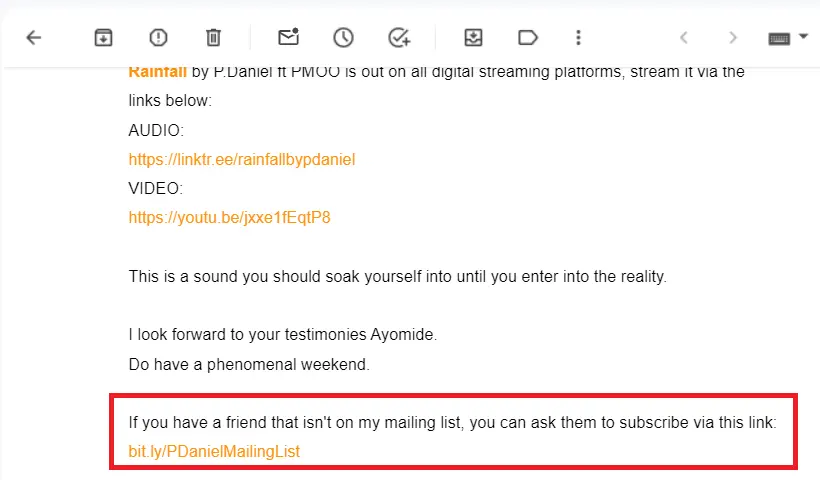
This strategy is helpful if you have a good record of engagement from subscribers and a high loyalty score. Moreover, leads gained through referrals are 90% more likely to convert than those that weren’t.
To make the referral more effective, create a loyalty reward program. The more leads referred, the more rewards earned. And the rewards should be exchangeable for premium resources, discounts, or access to gated channels.
8. Use AI Customer Chatbots
AI-powered chatbots are smarter than ever. Most businesses now use them as personal assistants to guide new visitors or leads and help resolve queries without human input.
On the brighter side, you can use chatbots to collect data like email addresses, similar to what Sender did below.
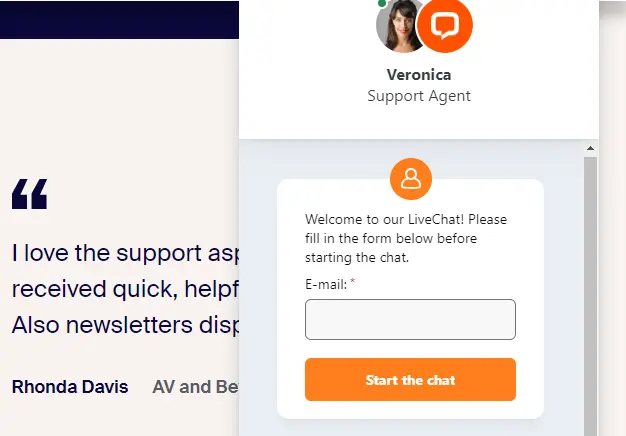
Source: Sender
Of course, addresses collected this way can’t be used for email marketing until you send a consent email. Allow your leads to confirm and double-check that they want to stay on your list before rolling out content.
9. Collaborate with Influencers For List Growth
Influencers usually have tens of thousands or millions of followers. Letting them promote your content to their audience has almost equal results to using paid ads. Or maybe even higher.
But what’s more important is the influencer you choose.
Besides the gigantic fan base, focus on industry relevance. B2B influencers will definitely be an appropriate option for business owners looking to address C-suite leaders compared to Fashion and beauty influencers.
Wrapping Up On Building An Effective Email List
Email lists are crucial to the success of your email marketing strategy, and how you build them matters. For a quick recap, start by creating lead magnets on your web pages and following up with in-content opt-in forms.
Consider asking customers to join your list after they make a purchase. Then, leverage gated content like WSJ. Other things to do include using paid ads with dedicated landing pages, utilizing social media, encouraging referrals from existing customers, and using AI-driven chatbots.
Lastly, collaborate with influencers.
If you still find building a list difficult, let us help you do it!
If you are ready to dive into this, which I strongly suggest…. Click Here to book a free consulting session on How to build an email list and also get free marketing tips.
See you soon.

